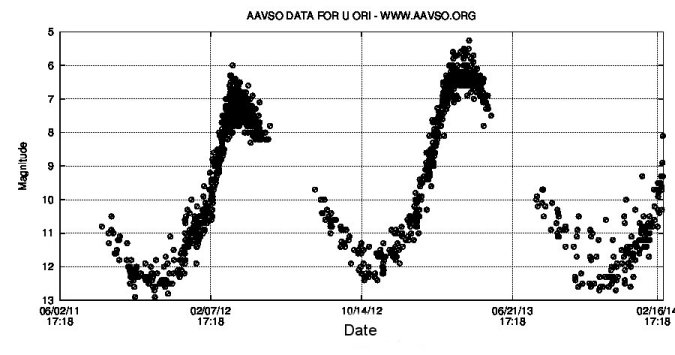
 |
U (not Upsilon) Orionis is a classic Mira (Long-Period) variable star that pulsates between fifth and thirteenth magnitude over a well-defined period of 372.4 days. Near Taurus, it is occasionally visible to the naked eye. Typically, the maxima and minima differ somewhat from one cycle to the next. Much of the optical variation is the result of fairly small changes in temperature. The variation in the infrared, where most of the star's energy is radiated, is much less. Courtesy of the American Association of Variable Star Observers (AAVSO). |